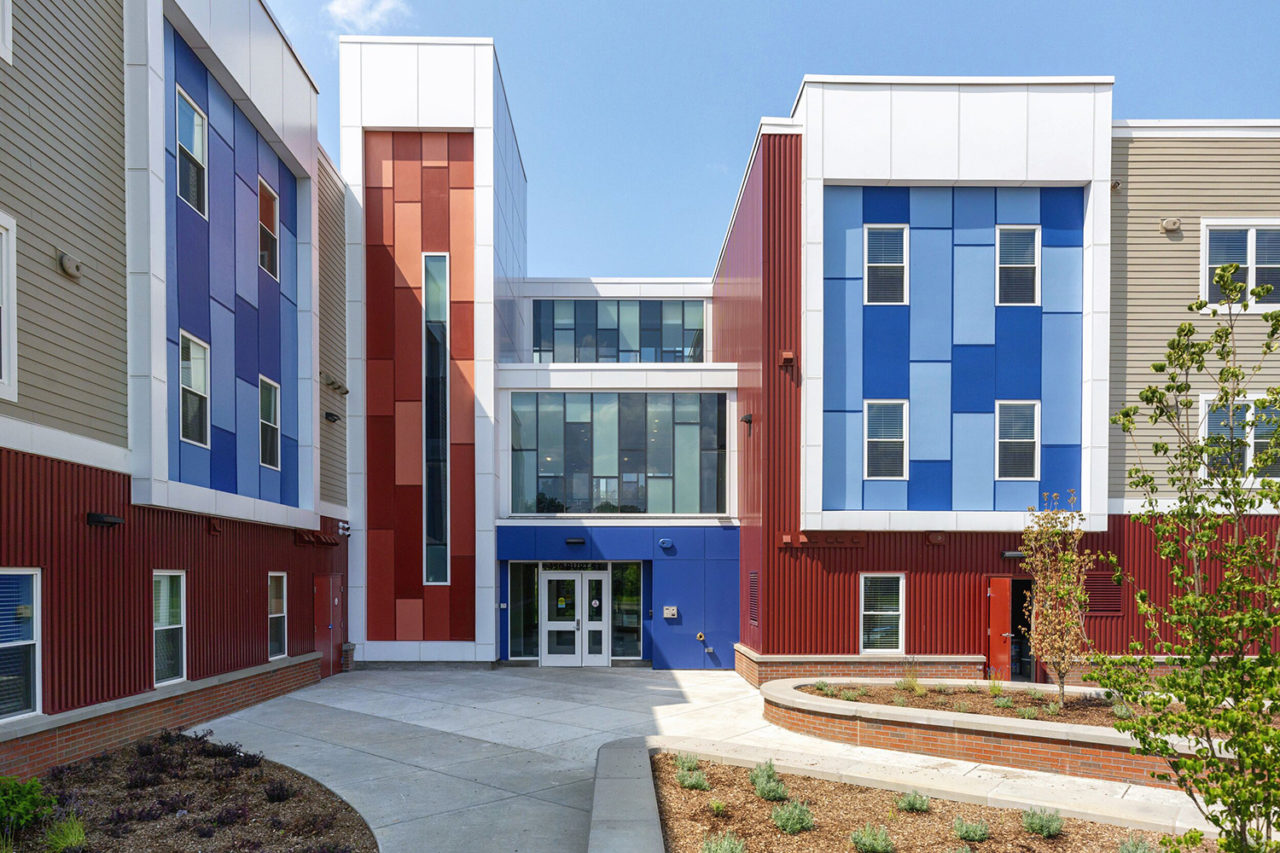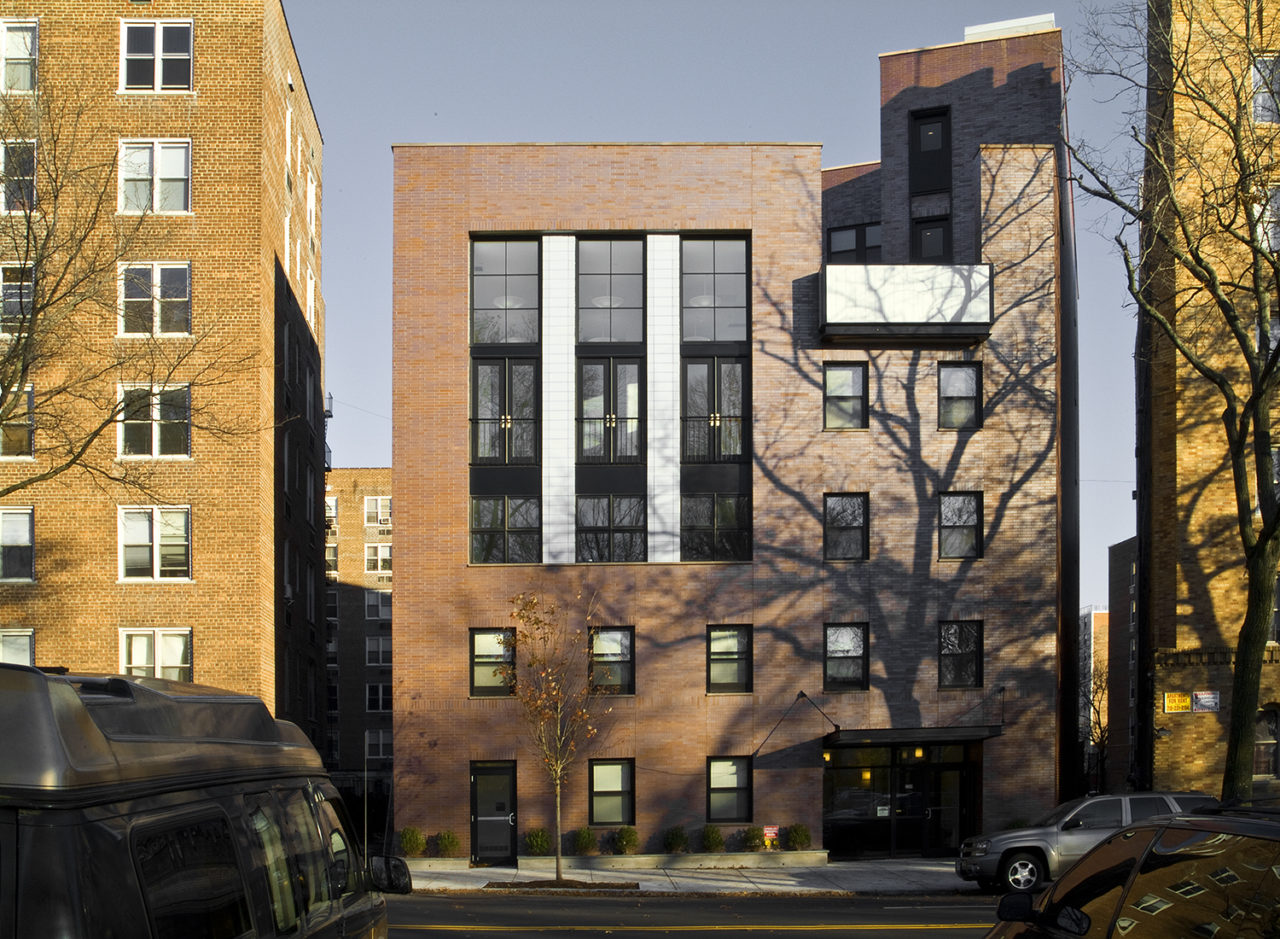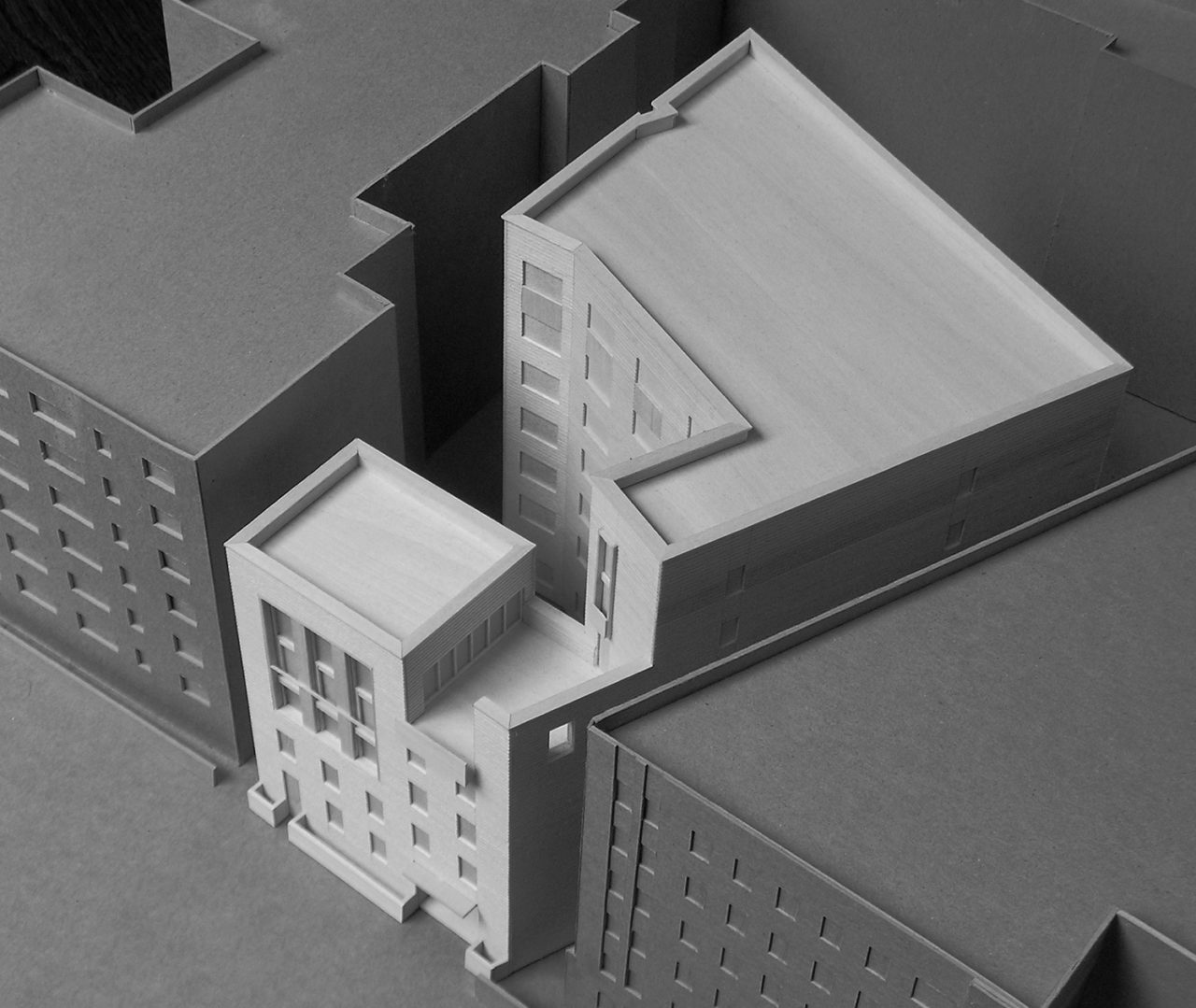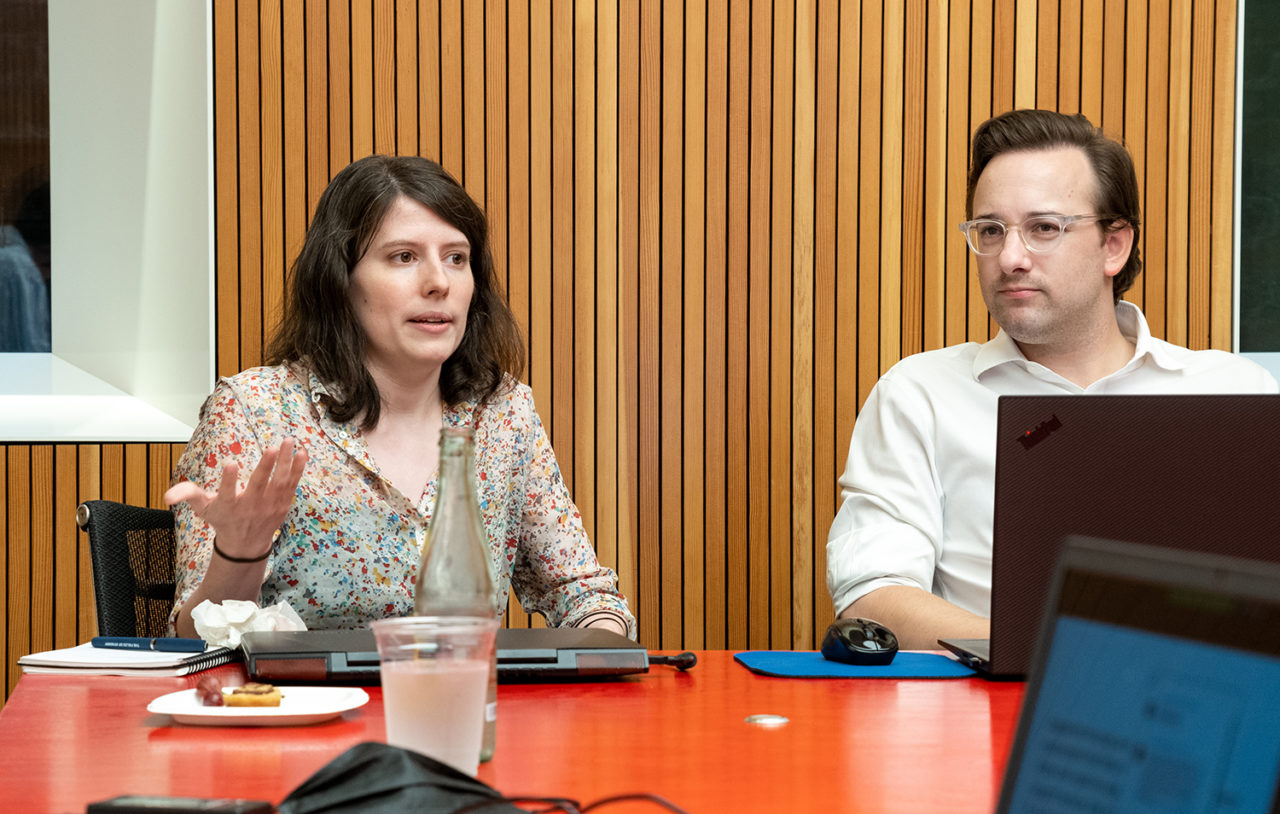by: Harriet Provine, Assoc. AIA, and Steven Corsello, Assoc. AIA
On Friday, August 26, the 2022 class of the AIANY Civic Leadership Program hosted their third development session, organized by Harriet Provine, Assoc. AIA, and Steven Corsello, Assoc. AIA. The session was focused on how successfully supportive housing in New York City addresses homelessness, and what can be done to improve its design and construction.
The quality, quantity, and delivery of supportive housing in New York City has perhaps never been so pressing. With shelter stays at record highs and growing, we needed more housing yesterday. And while the roughly 35,000 supportive units brought online since the early 1990s is impressive, the year-over-year pace of increase in supportive apartments is not enough to meet current demand. Architects can play a key role in creating the intellectual capital required to not only build better supportive housing, but to also bring design and construction expertise to bear on the delivery of new, high-quality supportive facilities.
Introduction
The development session began by defining supportive housing as affordable housing paired with either on-site or distributed social services. To specifically engage questions of architecture and design, Provine and Corsello focused most of the session on supportive housing with on-site services, referred to as congregate facilities. The session leaders also outlined a history of supportive housing, describing how over the past fifty years, the reduction of SRO units, the deinstitutionalization of mental illness, and austerity measures at the state and federal level have led to an increase in the number of individuals and households experiencing homelessness in New York City. Following the establishment of New York’s “Right to Shelter” law and increased investment in shelters, supportive housing has emerged as the premier response to homelessness.
After exploring the history, the session leaders examined evidence showing the impact on homelessness, reduction in justice involvement, and reduction in intensive service consumption from supportive housing programs. They then discussed how these projects are funded and built, with special focus on government funding streams and tax credits.
The session leaders then shifted their focus to the greater crisis of homelessness in New York City, citing evidence to show how supportive housing is unable to fully address the crisis in its current iteration. The city specifically stipulates that supportive housing units only be occupied by highly stigmatized populations, including the chronically homeless and people with serious mental illness, which raises questions about the amount of funding required to provide adequate services to tenants and concerns about the transparency of the application process.
Panel: Providers
Following the introduction, the conversation about the state of supportive housing in New York continued with three supportive housing providers. The panelists included:
- Jeannette Ruffins, CEO, Homeward NYC
- David Condliffe, Esq., Executive Director, Center for Community Alternatives
- Ted Houghton, President, Gateway Housing
Condliffe began the discussion by presenting Freedom Commons, a mixed-income development in Syracuse catered to the reentry community. The presentation led to a discussion about the stringent eligibility requirements for supportive housing in New York City and a consensus around the need to expand those requirements. Community engagement strategies were also discussed, including open door policies, open houses, and communication with community boards.
The panelists also noted that we can’t build our way out of homelessness, and touched on structural socio-economic problems like mass incarceration and the long-term disinvestment in public housing. Final recommendations to architects were to listen to affected populations, explore flexible options, and to stand firm against excessive value engineering that can rob a development of its design character.
Panel: Tenants and Advocates
Following the panel of providers, an attorney advocate and two supportive housing tenants and activists provided accounts of living in supportive housing and the ways it could be improved. The panelists included:
- Michael Andersson, Scattered Site Supportive Housing Tenant and activist, Supportive Housing Organized and United Tenants (SHOUT)
- Kat Corbell, Congregate Supportive Housing Tenant and activist, SHOUT
- Sandra Gresl, Senior Staff Attorney, Mobilization for Justice
The focus of the discussion moved to architectural issues in congregate supportive housing. Tenants described experiences with excessive temperatures, flooding, limited floor and cabinet space, inadequate accommodation for service animals, noise complaints, and lack of push buttons. The session leaders and panelists then tried to parse out what was actionable from an architectural perspective. Proactive measures suggested by tenants centered on noise and temperature control, along with timers integrated into appliances for those with sensory or memory issues and better planned package and mail rooms. The panel ended in a discussion of the Supportive Housing Tenants Bill of Rights, legislation passed in 2021.
Architecture Activity
After the two panels, participants focused on the design of supportive housing. The infill architecture of Jonathan Kirschenfeld served as a starting-off point for design opportunities provided by zoning use group Z3, “non-profit institution with sleeping accommodations,” and occupancy group R-2. Kirschenfeld’s infill supportive housing projects take advantage of the lack of a parking requirements and smaller courtyard space requirements to create unique outdoor “rooms” for tenants and double-height indoor spaces—both rare in the city’s supportive housing facilities. The units employ high window-to-floor area ratios and in some cases exceed the slab-to-slab height limitations specified in the NYC Department of Housing Preservation and Development’s (HPD) current Design Guidelines for Supportive Housing. In many cases, common areas and circulation spaces also exceed HPD’s size limits. The HPD’s guidelines aim to maximize the number of units in the building’s they fund, but could be seen as too prescriptive. The juxtaposition of these guidelines, Kirschenfeld’s richly textured buildings, and tenant input provided an opportunity for participants to pick and choose the features and space sizes they felt would best ensure tenant success in a hypothetical supportive housing facility.
Core Takeaways
Supportive housing in New York City has been successful in helping some New Yorkers in need, in some cases exceptionally so. However, there is work to be done to streamline and make more transparent the eligibility criteria and application process, as well as in ensuring tenants are heard. Improved communication between landlords, tenants, tenant advocates, and NYC’s Human Resources Administration is key to ensuring that the city’s supportive housing stock evolves in a people-first manner. Improved input and feedback channels could go well beyond identifying and remedying the discrete needs of tenants and serve as a database for improving the long-term design and construction trajectory of supportive housing facilities.
Special thanks to
Alicia Duque-French, CLP Advisor
David Cleghorn, HELP USA
Annie Tirschwell, Type A Projects
Muzzy Rosenblatt, BRC
Elissa Winzelberg, Breaking Ground
Joseph Loonam, VOCAL NYC
Jeannette Ruffins, Homeward NYC
David Condliffe, Esq., Center for Community Alternatives
Ted Houghton, Gateway Housing
Jonathan Kirschenfeld, Jonathan Kirschenfeld Architect
Sandra Gresl, Mobilization for Justice, Inc.
Kat Corbell, tenant and activist
Michael Andersson, tenant and activist
Michael Korn, tenant and activist
Amber Atiya, tenant and activist
Abby Hinds, tenant and activist
Christina Brown, CLP Advisor
Alejandra Zapata, CLP Advisor
Allison Lane, CLP Advisor
Anne Chen, CLP Advisor
Kavitha Mathew, AIANY
And the tenants and advocates who spoke to us off the record.











